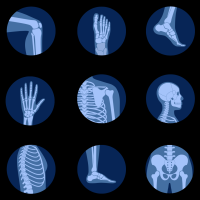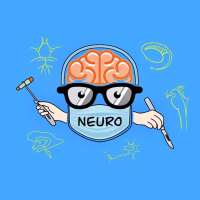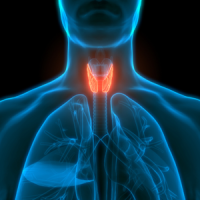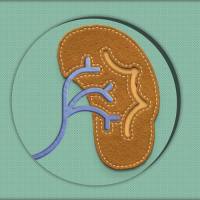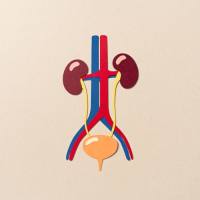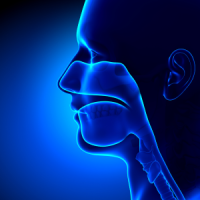【商业翻译】(医师报约稿)American College of Emergency Physicians Issues Guidelines...
1.保证质量。
2.本星期四(6.7)晚10点前交稿。
3.格式见置顶的文摘编译格式:
http://www.dxy.cn/bbs/post/view?bid=116&id=8600034&sty=1&tpg=1&age=0
4.稿酬按医师报标准。
5.为保证翻译质量起见,在本版得分超过15分以上的战友方可认领。
6.每位战友只能认领1篇,编译小组成员有精力最多可认领2篇。
7.作者统一署名为"丁香"
8.文中出现的杂志名称用原文,无需翻译。
9. 注意编译而非简单直译、中文罗列,看清稿件要求字数,适当增减内容。译完有拿不准的地方也指出来,以便其他战友讨论。
American College of Emergency Physicians Issues Guidelines for Treatment of Syncope
Release Date: April 30, 2007
April 30, 2007 — The American College of Emergency Physicians (ACEP) has issued guidelines on the evaluation and treatment of patients who present to the emergency department with syncope. The new recommendations are published in the April issue of the Annals of Emergency Medicine.
"Syncope is a symptom complex that is composed of a brief loss of consciousness associated with an inability to maintain postural tone that spontaneously and completely resolves without medical intervention," write ACEP Subcommittee Chair J. Stephen Huff, MD, and colleagues. "It is distinct from vertigo, seizures, coma, and states of altered consciousness. Syncope is a common presentation to the emergency department (ED) that accounts for 1% to 1.5% of ED annual visits and up to 6% of hospital admissions."
Difficulties encountered in the ED evaluation of patients with syncope may include missing, inaccurate, or conflicting historical information from observers; lack of memory for the event when patients arrive in the ED; and often asymptomatic state by the time patients reach the hospital.
Causes of syncope include any process that transiently reduces cerebral perfusion.
"Concerns that well-appearing patients are at risk for sudden death often fuel extensive clinical evaluations or hospital admissions because the large differential diagnosis includes some processes that may be life-threatening," the authors write. "Many studies have demonstrated the low yield of nondirected diagnostic testing. From the available literature, it is unclear whether admitting asymptomatic syncope patients for observation and inpatient evaluation affects patient outcome."
Costs of hospitalization of patients with syncope are estimated at more than $2 billion annually in the United States. The authors note that applying the level B recommendations of the 2001 ACEP clinical policy on syncope would identify all patients with cardiac causes of syncope and reduce the admission rate from 57.5% to 28.5%.
These facts prompted the ACEP Subcommittee to reevaluate the role of the emergency clinician when treating the patient presenting with syncope. Those relatively few patients with life-threatening processes (including dysrhythmias, pulmonary embolism, aortic dissection, subarachnoid hemorrhage, acute coronary syndromes), and other patients who may benefit from urgent intervention (such as patients with bradycardia or medication-induced orthostatic hypotension), must still be identified.
When the ED evaluation of a patient presenting with syncope does not identify a clear etiology, the emergency clinician must then determine which of these patients need additional diagnostic evaluation and monitoring, and in what setting that should take place. Similar to the process of chest pain evaluation, the role of the ED clinician managing syncope has shifted from an effort to determine a specific diagnosis to that of risk stratification.
Symptoms and complaints of the patient with syncope should be carefully considered after performing a complete history. Other associated symptoms (eg, cardiac, neurologic, abdominal, or respiratory) may facilitate diagnosis of an underlying medical condition, such as an acute coronary event, aortic dissection, pulmonary embolism, seizure, ectopic pregnancy, or gastrointestinal hemorrhage.
The current update of the 2001 ACEP clinical policy on syncope does not attempt to outline the evaluation of patients presenting with syncope associated with specific diagnoses, but instead attempts to assist the ED clinician with 3 critical issues:
1. What history and physical examination data help to risk-stratify patients with syncope?
o Level A recommendations: History or physical findings consistent with heart failure may help identify patients at higher risk for an adverse outcome.
o Level B recommendations: Older age, structural heart disease, or a history of coronary artery disease are risk factors for adverse outcomes. Younger patients with nonexertional syncope and patients without history or signs of cardiovascular disease, a family history of sudden death, and comorbidities are at low risk for adverse events.
o Level C recommendations: None specified.
2. What diagnostic testing data help to risk-stratify patients with syncope?
o Level A recommendations: Patients with syncope should undergo a standard 12-lead electrocardiogram (ECG).
o Level B recommendations: None specified.
o Level C recommendations: echocardiography, cranial computed tomographic (CT) scanning, and other laboratory testing and advanced investigative testing should not be performed routinely in the absence of specific findings in the history or physical examination.
3. Who should be admitted to the hospital after an episode of syncope of unclear cause?
o Level A recommendations: None specified.
o Level B recommendations: Patients with syncope and evidence of heart failure or structural heart disease should be admitted to the hospital, as should patients with syncope and other factors that lead to stratification as high-risk for adverse outcome (older age and associated comorbidities; ECG abnormalities, including acute ischemia, dysrhythmias, or significant conduction abnormalities; hematocrit value less than 30; and history or presence of heart failure, coronary artery disease, or structural heart disease).
o Level C recommendations: None specified.
"A small number of studies have explored a clinical decision or observation unit, with testing or consultation as an alternative to inpatient admission in patients stratified as neither high-risk nor low-risk for adverse outcomes (ie, intermediate-risk patients)," the authors conclude. "Further studies are needed to identify distinct subgroups that might benefit from this strategy. The distinction between ED evaluation and admission is blurring with the availability of additional diagnostic resources, the opportunity for longer observation periods, and the reality of prolonged ED stays."
The Emergency Nurses Association supported this study.
Ann Emerg Med. 2007;49:431-444.
Clinical Context
Syncope is defined as a brief loss of consciousness and inability to maintain postural tone that resolves spontaneously and completely without medical intervention, distinguishing it from vertigo, seizures, coma, and states of altered consciousness. Syncope accounts for 1% to 1.5% of annual ED visits and up to 6% of hospital admissions. Evaluation of patients with syncope may be problematic in the ED, because accurate historical information is often lacking or conflicting and patients are often asymptomatic when they arrive in the ED and no longer remember the event.
An analysis of the 2001 ACEP clinical policy on syncope showed that by applying the level B recommendations, all patients with cardiac causes of syncope would be identified, and the admission rate would decrease from 57.5% to 28.5%. This update of the 2001 guidelines does not address the evaluation of patients presenting with syncope associated with specific diagnoses, but instead highlights the ED clinician's role in risk stratification.
最后编辑于 2022-10-09 · 浏览 1688







